Clade †Hallucicrania Clade †Pareiasauromorpha Scientific name Pareiasauria | Superfamily †Pareiasauroidea Phylum Chordata Rank Family | |
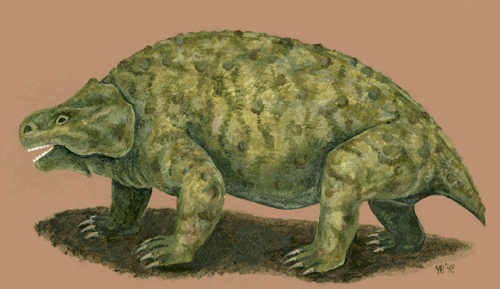 | ||
Similar Parareptilia, Scutosaurus, Bunostegos, Pareiasaurus, Procolophonidae | ||
Pareiasaurs (meaning "cheek lizards") are an extinct group of anapsid reptiles classified in the family Pareiasauridae. They were large herbivores that flourished during the Permian period.
Contents
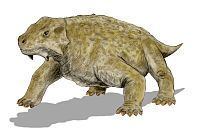
Pareiasaur
Description
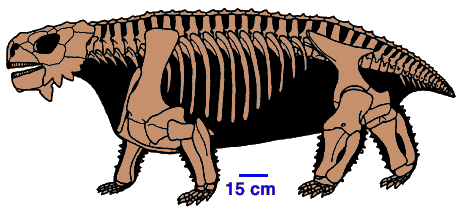
Pareiasaurs ranged in size from 60 to 300 centimetres (2.0 to 9.8 ft) long, and may have weighed up to 600 kilograms (1,300 lb). They were stocky, with short tails, small heads, robust limbs, and broad feet. The cow-sized species Bunostegos, which lived 260 million years ago, is the earliest known example of a tetrapod with a fully erect posture as its legs were positioned directly under their bodies. Pareiasaurs were protected by bony scutes called osteoderms that were set into the skin. Their heavy skulls were ornamented with multiple knobs and ridges. The leaf-shaped multi-cusped teeth resemble those of iguanas, caseids, and other reptilian herbivores. This dentition, together with the deep body, which may have housed an extensive digestive tract, are evidence of a herbivorous diet. Most authors have assumed a terrestrial lifestyle for pareiasaurs, but bone microanatomy suggests a more aquatic, plausibly amphibious lifestyle.
Evolutionary history
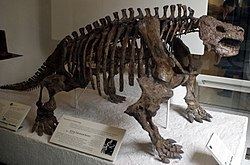
Pareiasaurs appear very suddenly in the fossil record. It is clear that these animals are parareptiles. As such, they are closely related to Nycteroleterids. Like Rhipaeosaurs, they may have filled the large herbivore niche (or guild) that had been occupied early in the Permian period by the Caseid pelycosaurs and before then the Diadectid amphibians and Edaphosaur reptiles. They are much larger than the diadectids, more similar to the giant caseid pelycosaur Cotylorhynchus. Although the last Pareiasaurs were no larger than the first types (indeed, many of the last ones became smaller), there was a definite tendency towards increased armour as the group developed.
Classification
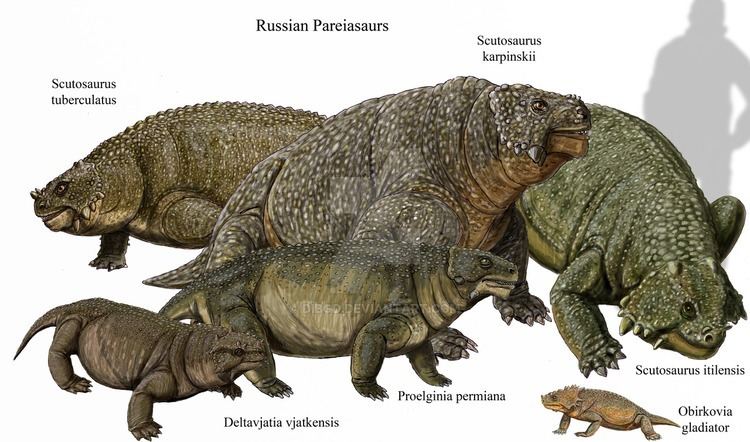
Some paleontologists have argued that pareiasaurs include the direct ancestors of modern turtles. Pareiasaur skulls have several turtle-like features, and in some species the scutes have developed into bony plates, possibly the precursors of a turtle shell. Jalil and Janvier, in a large analysis of pareiasaur relationships, also found turtles to be close relatives of the "dwarf" pareiasaurs, such as Pumiliopareia. However, the exact relationships of turtles remains controversial, and pareiasaur scutes may not be homologous with the shells of turtles.
Associated clades
Hallucicrania (Lee 1995), The clade Hallucicrania was coined by MSY Lee, for Lanthanosuchidae + (Pareiasauridae + Testudines). Lee's pareiasaur hypothesis is looking rather less likely following the discovery of Odontochelys, a transitional aquatic turtle with very non-pareiasaur-like teeth and whose half shell matches embryonic development in modern testudines. Recent cladistic analyses reveal that lanthanosuchids to have a much more basal position in the Procolophonomorpha, and that the nearest sister taxon to the pareiasaurs are the rather unexceptional and conventional looking nycteroleterids (Müller & Tsuji 2007, Lyson et al. 2010) the two being united in the clade Pareiasauromorpha (Tsuji et al. 2012).
Pareiasauroidea (Nopcsa, 1928), The clade Pareiasauroidea (as opposed to the superfamily or suborder Pareiasauroidea) was used by Lee 1995 for Pareiasauridae + Sclerosaurus. More recent cladistic studies place Sclerosaurus in the procolophonid subfamily Leptopleuroninae (Cisneros 2006, Sues & Reisz 2008) which means the similarities with pareiasaurs are the result of convergences.
Pareiasauria (Seeley, 1988), If neither Lanthanosuchids or Testudines are included in the clade, the Pareiasauria only contains the monophyletic family Pareiasauridae. It's a traditional linnaean term.
Phylogeny
Below is a cladogram from Tsuji et al. (2013):
